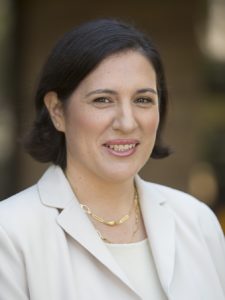Mobile Alerts for People who Wander: Where RFID/NFC, Biometrics and GPS meet
Primary carers of people who wander have a substantial onus to keep their loved ones and clients safe. Though patterns of wandering differ between various stakeholder types in various contexts, the two main design points include:
- Ensuring an individual does not go beyond the perimeters of a home (in-building) or a facility (on-campus)
- Ensuring an individual who has wandered can be found quickly (usually traversing a public space).
Wandering about a public space is one of the freedoms people enjoy about being alive. Whether it is a brisk walk to the local park, a bus or train trip to the beach, or aeroplane travel to various parts of the world, we can all enjoy the world around us. Walking does not require any token, travel often requires a ticket such as a TravelPass, and flying a passport with an appropriate VISA. People who wander usually do so on foot or by public transport. This session tries to narrow in to the potential for using RFID/NFC, facial recognition, and GPS to trigger mobile alerts when someone has wandered outside a minimum bounded area.
Children with autism for example, have often escaped their homes, only to find themselves in danger, either from oncoming traffic or from deep waters. Those suffering from varying levels of dementia have found themselves on public transport or disoriented at the wheel. Quite often wanderers frequent paths they know well. Wanderers who are in urban centres can have a very different experience to those in regional or rural settings. Context awareness is paramount for a carer. Is there a lake nearby? Is their busy traffic outside the family home? Is the wanderer known to people in the local community like café owners or train station attendants?
Since the early 2000s, various kinds of technological solutions have attempted to help those in need in various markets. Though we are making major inroads into what we have termed hierarchical positioning systems, most systems seem to fall short and so we still have many reports of wanderers falling to their deaths, or drowning, or suffering some other plight. The anguish for carers is significant. There is no respite for them, and the responsibility takes a grave toll on individuals.
This session will explore how technologies could be utilized to monitor people in need within the family home or institutional facility (e.g. wearing RFID/NFC tags) and furthermore how once traversing a public space the wanderer can be located. A number of factors can impact findability: morphological conditions, the individual’s agreement to wear a device, how to respond to mobile alerts once a trigger has been executed.
Participants will learn about:
- Individual wearer responses to wearable medic alert bracelets and tag technology
- In-building and on-campus solutions offered by BLE and UWB
- Advances in satellite-to-base chips (GPS sensors) used by the military
- The role of visual analytics in near real-time analysis
- Informed consent issues, duty of care, and getting privacy right
- Patterns of analysis in human activity monitoring and what that can tell us
- The importance of affordable solutions for primary carers who usually do not have a full time job while they are caring for loved ones who wander
- Coordination with emergency services for assistance in finding a missing person
Presenter: Professor Katina Michael, Faculty of Engineering and Information Sciences, University of Wollongong
Collaborator: Dr. Roba Abbas, honorary fellow, School of Computing and Information Technology, University of Wollongong
Speaker Biography
 Prof. Katina Michael is the author of Innovative Automatic Identification and Location Based Services: from Bar Codes to Chip Implants (2009) and co-editor of Uberveillance and the Social Implications of Microchip Implants (2014). She is also convenor of the annual Social Implications of National Security workshop since 2006, an Australian Research Council-funded Research Network for a Secure Australia. Michael has previously guest edited special issues for Proceedings of the IEEE on RFID Innovation and Computer on Big Data. Michael is the editor-in-chief of IEEE Technology and Society Magazine, and senior editor of IEEE Consumer Electronics Magazine. She is also Professor at the Faculty of Engineering and Information Sciences at the University of Wollongong where she is presently the Associate Dean – International. She is a senior member of the IEEE and is active in the Society for the Social Implications of Technology (SSIT) and also the IEEE Council on RFID (CRFID).
Prof. Katina Michael is the author of Innovative Automatic Identification and Location Based Services: from Bar Codes to Chip Implants (2009) and co-editor of Uberveillance and the Social Implications of Microchip Implants (2014). She is also convenor of the annual Social Implications of National Security workshop since 2006, an Australian Research Council-funded Research Network for a Secure Australia. Michael has previously guest edited special issues for Proceedings of the IEEE on RFID Innovation and Computer on Big Data. Michael is the editor-in-chief of IEEE Technology and Society Magazine, and senior editor of IEEE Consumer Electronics Magazine. She is also Professor at the Faculty of Engineering and Information Sciences at the University of Wollongong where she is presently the Associate Dean – International. She is a senior member of the IEEE and is active in the Society for the Social Implications of Technology (SSIT) and also the IEEE Council on RFID (CRFID).








